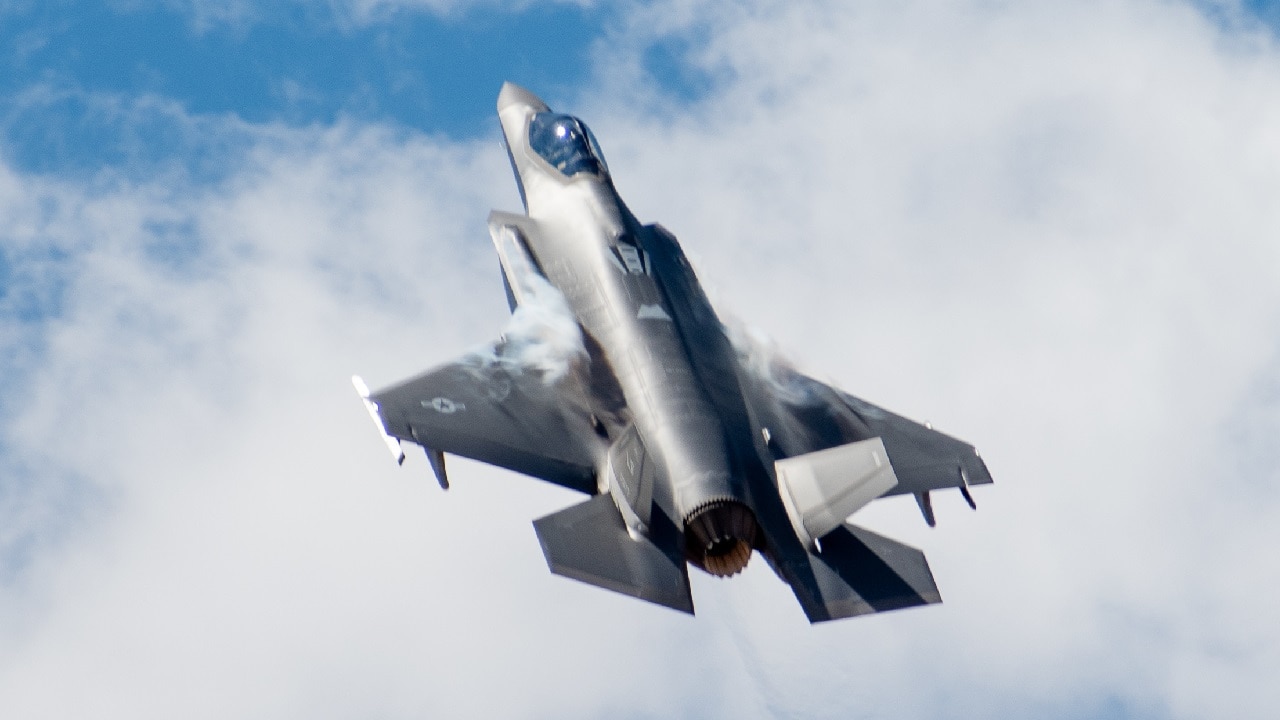In early April, it was announced that the Lockheed Martin F-35 Lightning II had surpassed 500,000 flight hours across global operations, demonstrating the program’s progress and continued maturity. The fifth-generation multirole fighter is now currently active at twenty-five bases and nine ships around the world.
Its interoperability has also made it an asset to the United States, allies and partner nations, and it will continue to perform for years to come.
Though its critics have taken aim at the F-35 – and missed the target – it is hard not to see why it is the best fighter on Earth.
A Joint Strike Fighter – Three Planes in One
The F-35 was designed to do what no single aircraft could do – and as a “Joint Strike Fighter,” it was developed to replace the United States Air Force’s A-10 and F-16, the United State Navy’s F/A-18, and the United States Marine Corps F/A-18 and AV-8B Harrier.
The single-engine, the single-seat plane is unique in that it can operate as a conventional-takeoff-and-
The United States Marine Corps, along with the UK’s Royal Air Force and Royal Navy, employ the F-35B, which can operate as a short-takeoff/vertical landing (STOVL) fighter.
The F-35 is now the backbone of allied airpower for a multitude of nations including the United States, the United Kingdom, Australia, Italy, Japan, Israel, the Netherlands, Norway, and South Korea. In addition, Belgium, Denmark, Finland, Germany, Poland, Switzerland, and Thailand have either ordered or expressed interest in flying high with the aircraft.
Range and Speed
As a fifth-generation fighter, the F-35 Lightning II is equipped with advanced stealth capabilities, along with improved agility and maneuverability, as well as enhanced sensor and information fusion, network-enabled operations, and sustainment. All that makes the F-35 among the world’s most advanced multi-role fighters flying today.
Powered by F135-PW-100 engines that provide 40,000 pounds of maximum propulsion, the combat aircraft has a range of 1,200 nautical miles, and can reach speeds of upwards of Mach 1.6 (1,200 mph). Like the F-35, the F135-PW-100 was developed with two variants; the CTOL version used in the F-35A and F-35C, and a two-cycle STOVL model for the F-35B, which includes a forward lift fan.
A 21st Century Warbird
The F-35 features advanced electronic warfare (EW) capabilities that allow pilots to locate and track enemy forces like no other combat aircraft in the world today.
In addition, the pilots can jam radars and disrupt threats, while advanced avionics provides the pilot with real-time access to battlespace information. That includes 360-degree coverage of the tactical environment – and data collected by the fighter’s sensors can be shared with commanders at sea, in the air, or on the ground. The real-time data of the combat situation makes the F-35 a true force multiplier during coalition operations.
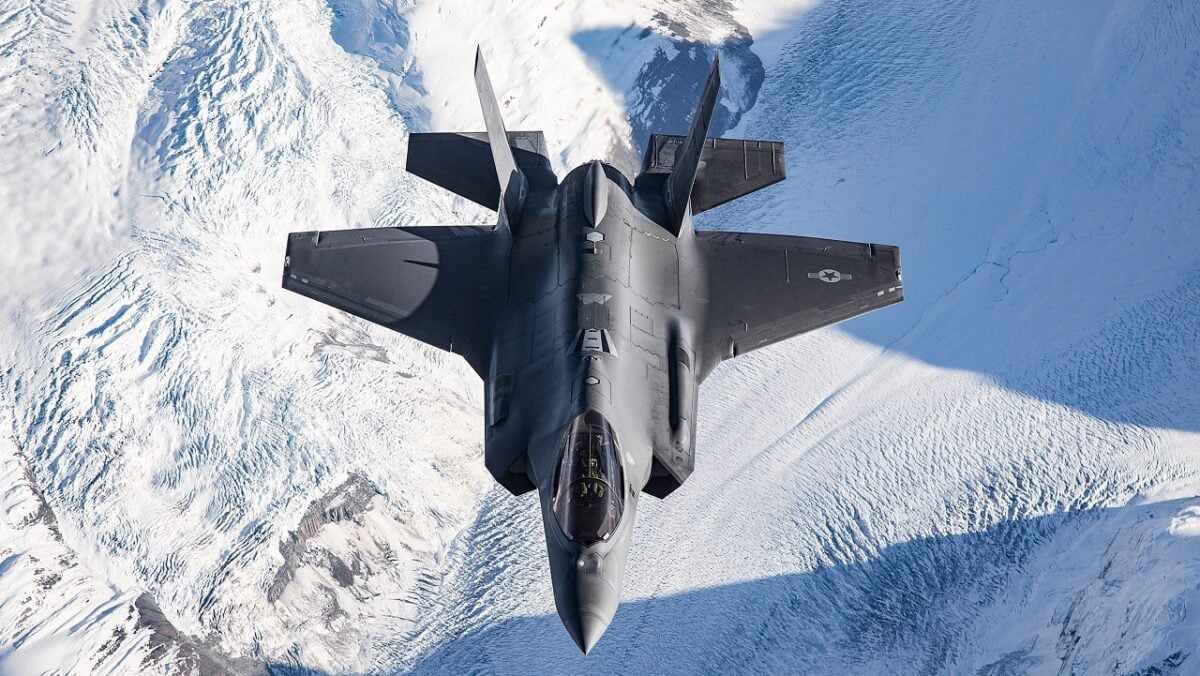
F-35 AF-2 Ferry Flight from Edwards AFB, CA to Eielson AFB, AK. Oct. 11, 2017 Pilot Maj.Eskil “Taz” Amdal, Royal Norwegian Air Force.
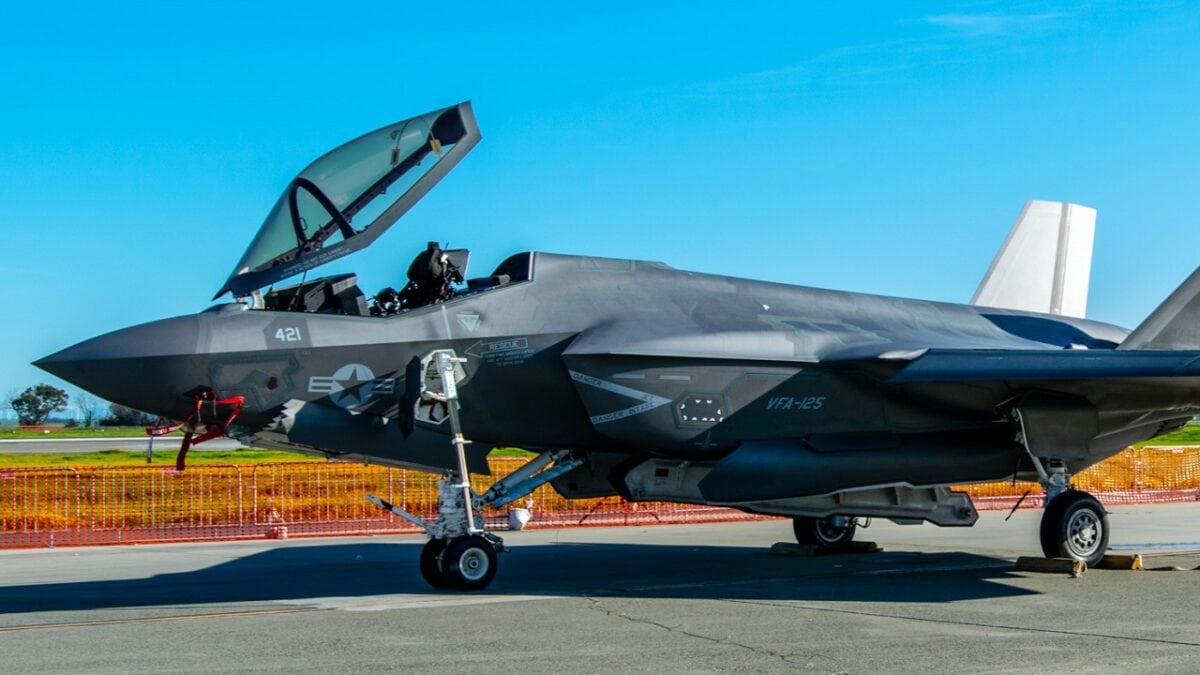
F-35C on Static Display. Image Credit: Creative Commons.
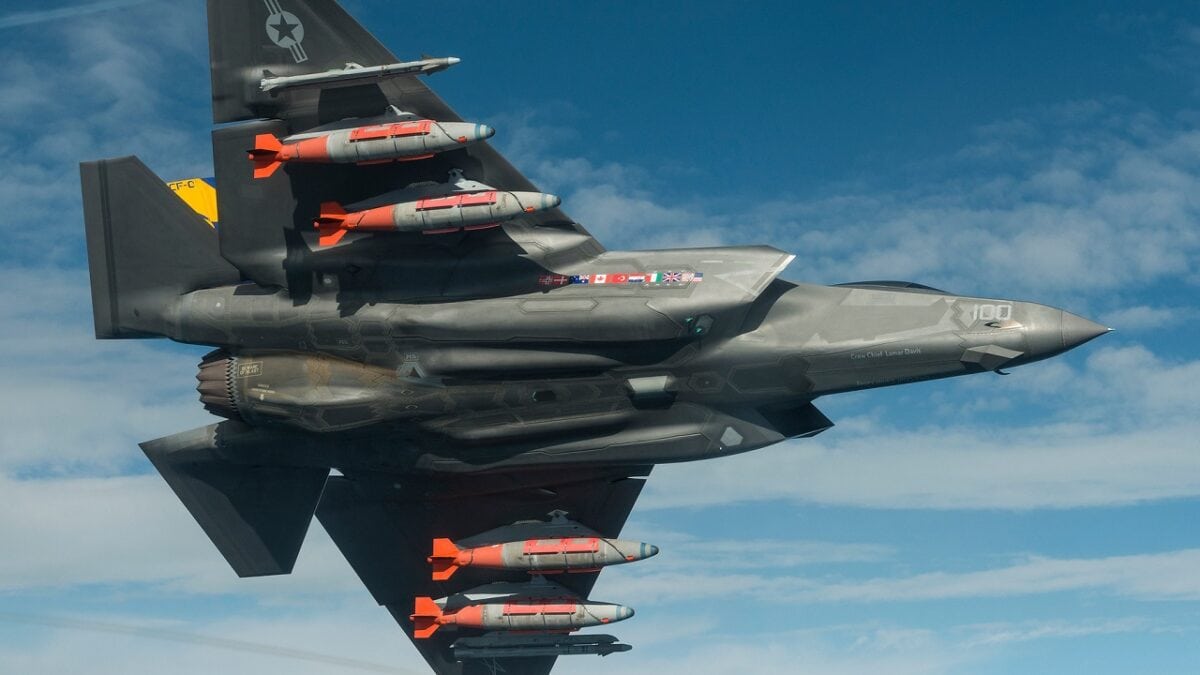
CF-1 Flt 453 piloted by Lockheed Martin test pilot Mr. Dan Canin flies with external GBU-31 weapons for the first time on an F-35, the test was flown from NAS Patuxent River, MD on 5 Aug 2016
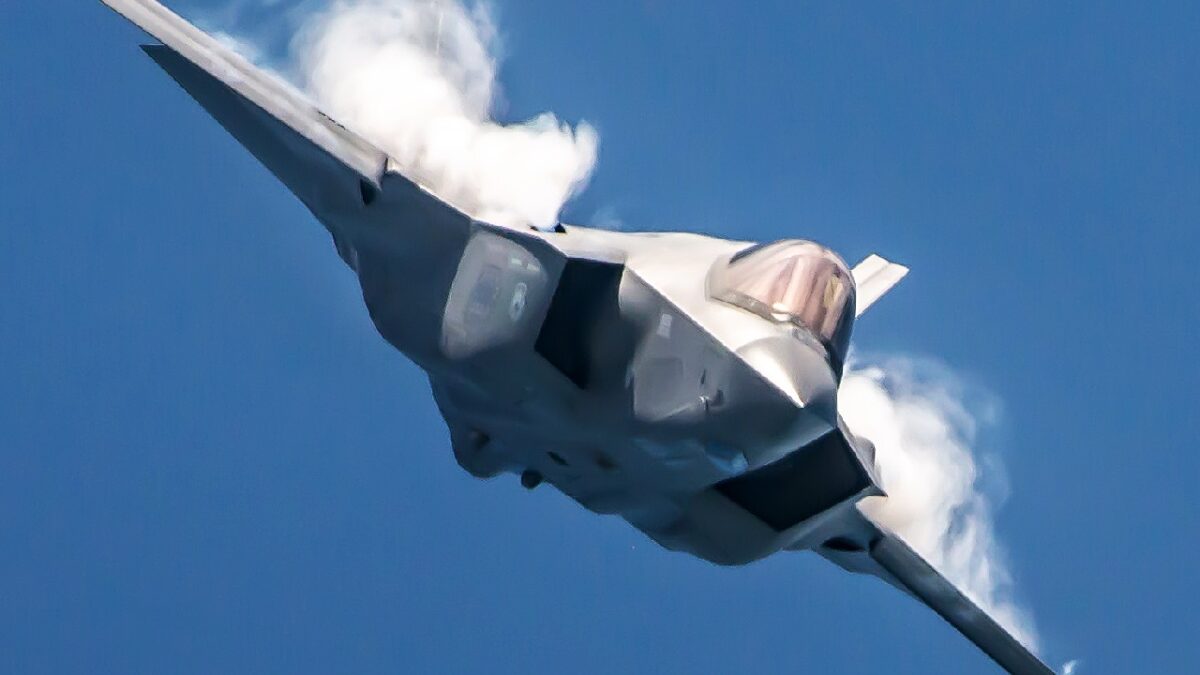
Capt. Andrew “Dojo” Olson, F-35A Lightning II Demonstration Team pilot, performs over Miami Beach, Fla., May 25, 2019. Olson performed the demo during both days of the Miami Beach Air and Sea Show. (U.S. Air Force photo by Staff Sgt. Jensen Stidham)
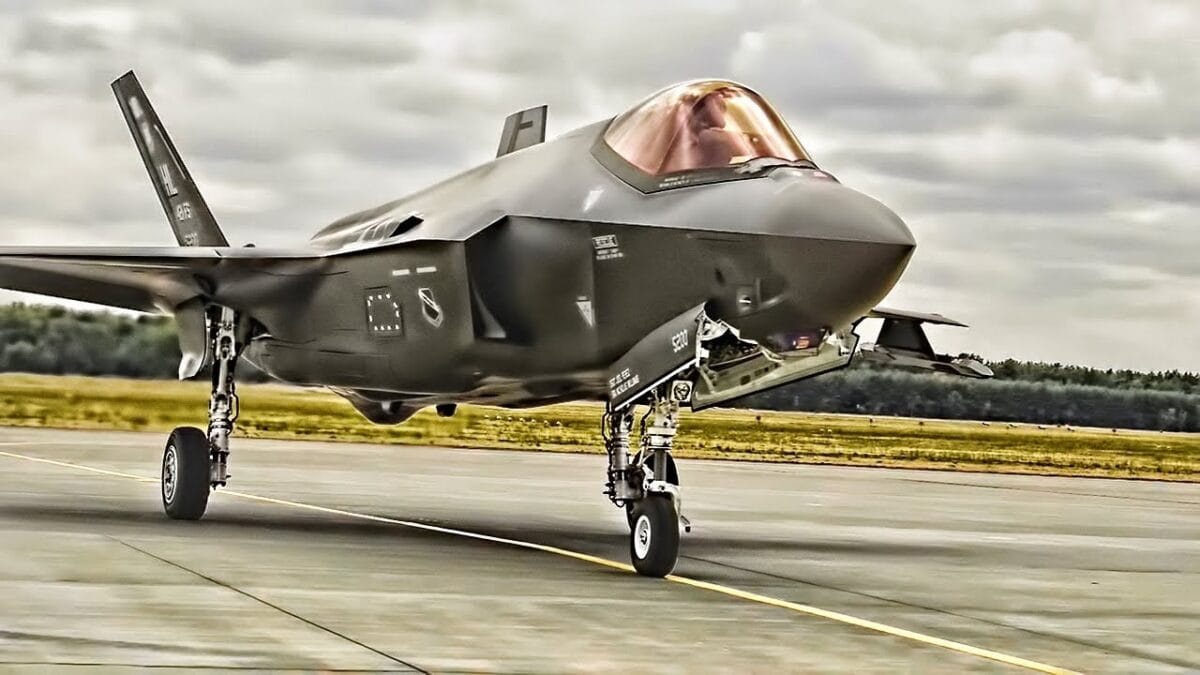
F-35 in Poland. Image Credit: Creative Commons.
The aircraft was also designed to be “future proof,” and in December 2021, BAE Systems received a new contract to significantly upgrade and modernize the EW system for the F-35 Lightning II, enabling the fighter to quickly detect and address evolving electromagnetic threats.
The system’s modular architecture will also allow for efficient hardware upgrades that reduce lifecycle and retrofit costs and support faster software updates across the global F-35 fleet. The upgrades will also provide the Non-Intrusive Electronic Warfare Test Solution (NIEWTS) fault isolation and diagnostics capability, which enables precise troubleshooting and lowers maintenance costs.
Stealthy Until You Bring Out the Beast
The Lockheed Martin-built Joint Strike Fighter was developed to be a “multi-role” stealth fighter, which in essence means that it was specifically engineered with an ability to launch massive air attacks on air-to-air and air-to-ground targets. The aircraft employs an internal weapons bay intended to enable attacks against an adversary while preserving a stealth configuration, yet can be utilized in a full-force attack by employing the external pylons as well – which has become known as its “ beast mode” or “bomb truck.”
The Lightning II can also carry a variety of air-to-air missiles, air-to-surface missiles, anti-ship missiles and bombs, and the different weapon layouts are meant to accommodate a range of tactical scenarios.
The “First Day of War” loadout is meant to preserve the “stealth” configuration, and the aircraft’s loadout could consist of four AIM-120 AMRAAM missiles for air-to-air missions, or a mixture of four AIM-120s/GBU-31 JDAM “smart bombs,” for air-to-ground missions, all of which would be loaded into the F-35’s internal armaments bay. As the name implies, stealth loadouts are designed to minimize radar cross-section and to maintain low observability (LO) when the enemy’s anti-air systems are operating at full capacity.
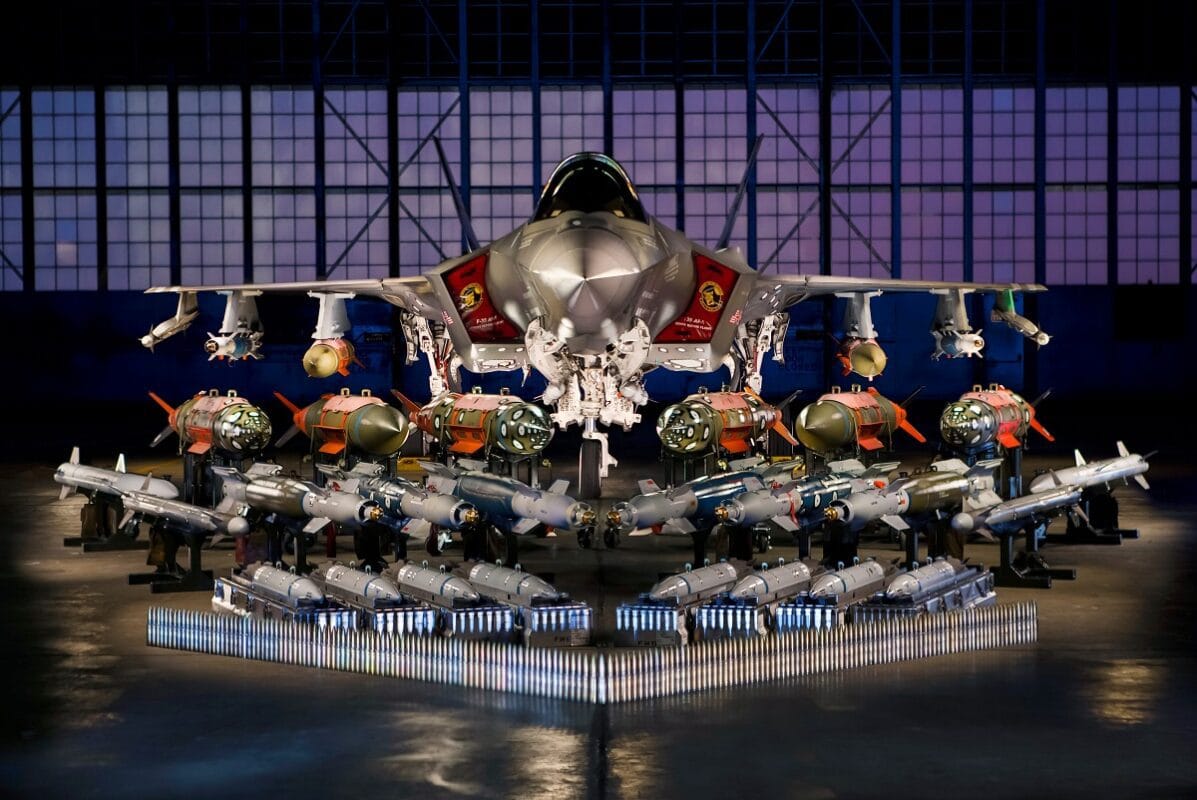
Image Credit: Lockheed Martin.
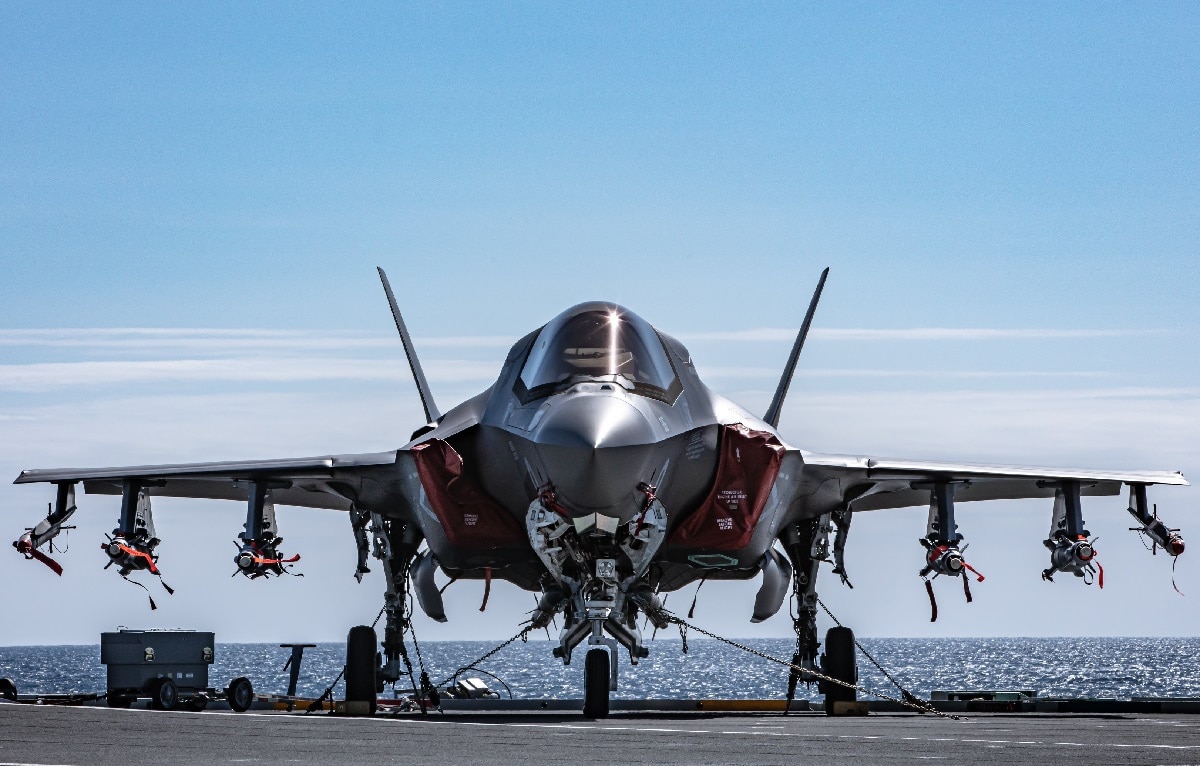
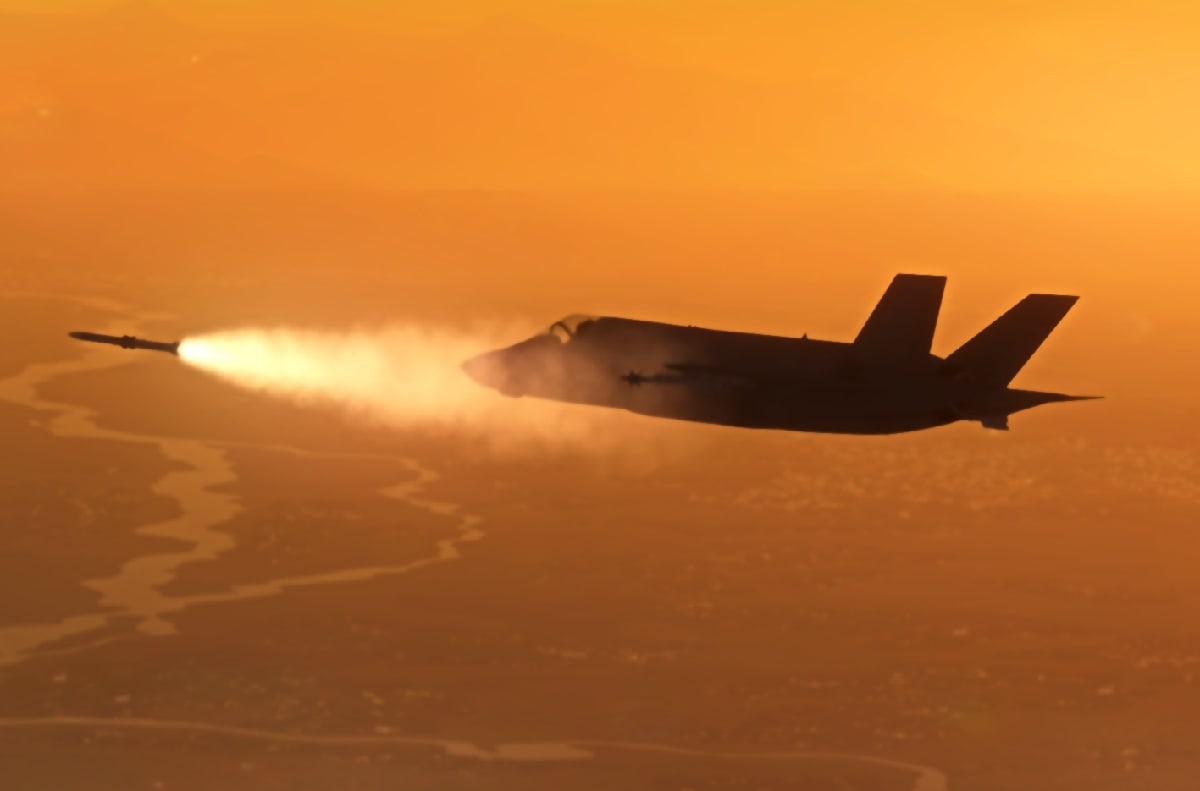
As an adversary’s hostile anti-air systems – including sensors, air defense missiles, gun systems, and even enemy aircraft – are eliminated, and the conflict enters into the “ Third Day of War,” the loadout would change accordingly. When it is determined that the F-35 no longer needs to rely on its stealth and LO for survivability the “beast mode” comes into play as the F-35 then deploys externally-mounted weapons with a larger radar footprint.
The weapons loadout is then significantly larger.
In stealth mode, the F-35 can carry 5,700 lbs internally, while in “beast mode” it can carry a full 22,000 lbs, of both air-to-air and air-to-ground munitions.
Worth Every Penny
The biggest complaint from the platform’s critics remains the cost of the F-35. It is true that it will go down in history as the most expensive weapons system ever developed, costing upwards of $1.508 trillion for the life of the program. However, the F-35s will likely remain in service until the 2070s – and it is important to note that the dollar figures have also been estimated in 2070 dollars, a fact that needs to be put in perspective.
Though the fact also remains that while $1.5 trillion is a lot of money, it is worth noting too that the F-35 will replace numerous older aircraft while the capabilities of the F-35 vastly surpass current fourth-generation platforms.
As many experts have argued, it is also far more cost-effective to operate fewer types of aircraft, plus the F-35 can streamline training operations and require fewer suppliers – both have financial benefits.
The final consideration is that potential adversaries are developing fifth-generation aircraft as well, and the F-35 is really the best platform to ensure that we’re not outgunned in the sky.
Now a Senior Editor for 1945, Peter Suciu is a Michigan-based writer who has contributed to more than four dozen magazines, newspapers and websites. He regularly writes about military hardware, and is the author of several books on military headgear including A Gallery of Military Headdress, which is available on Amazon.com. Peter is also a Contributing Writer for Forbes.

